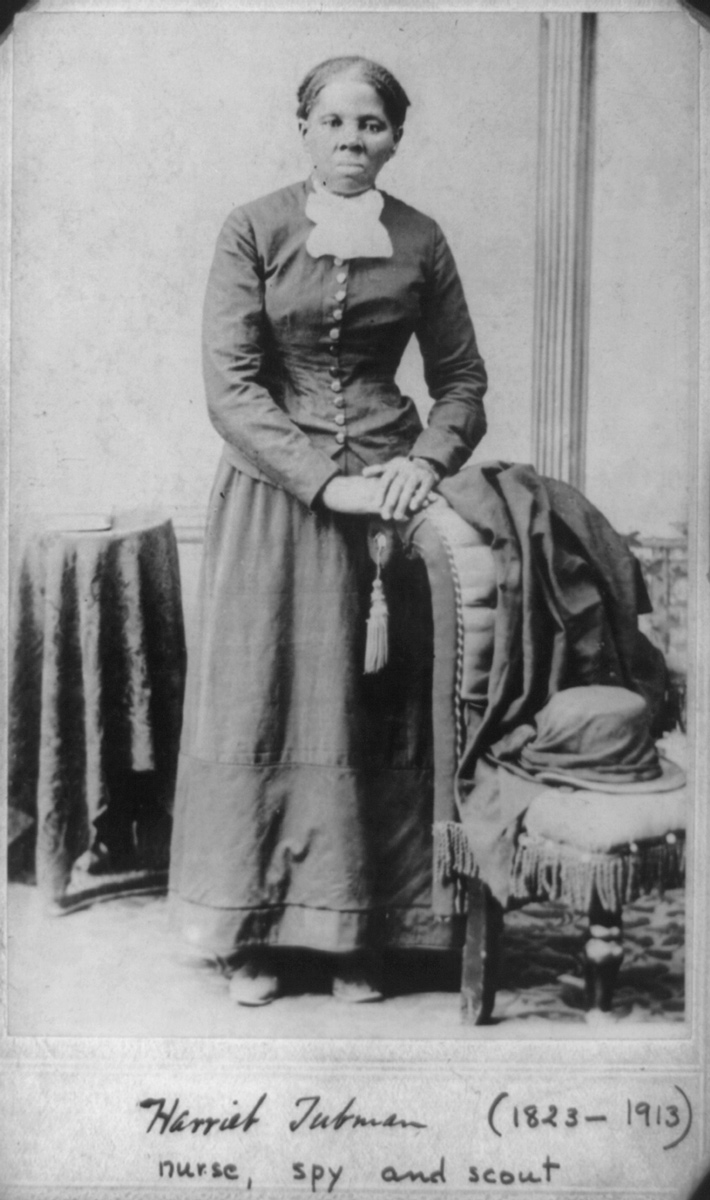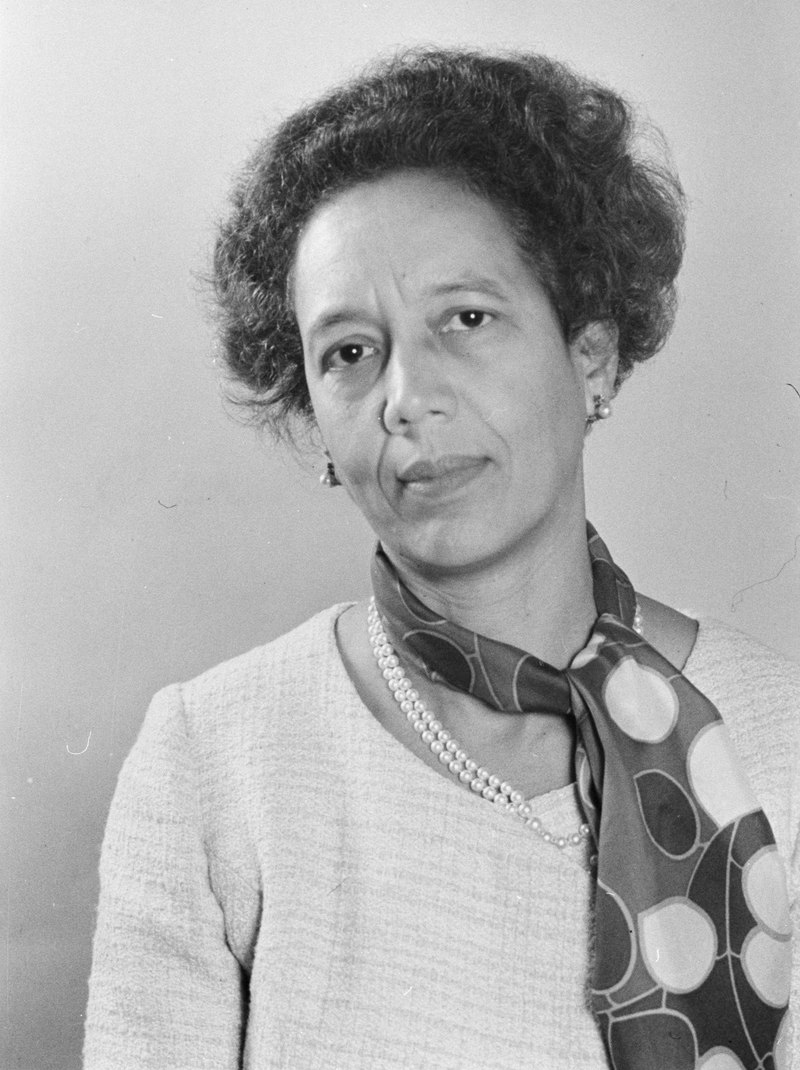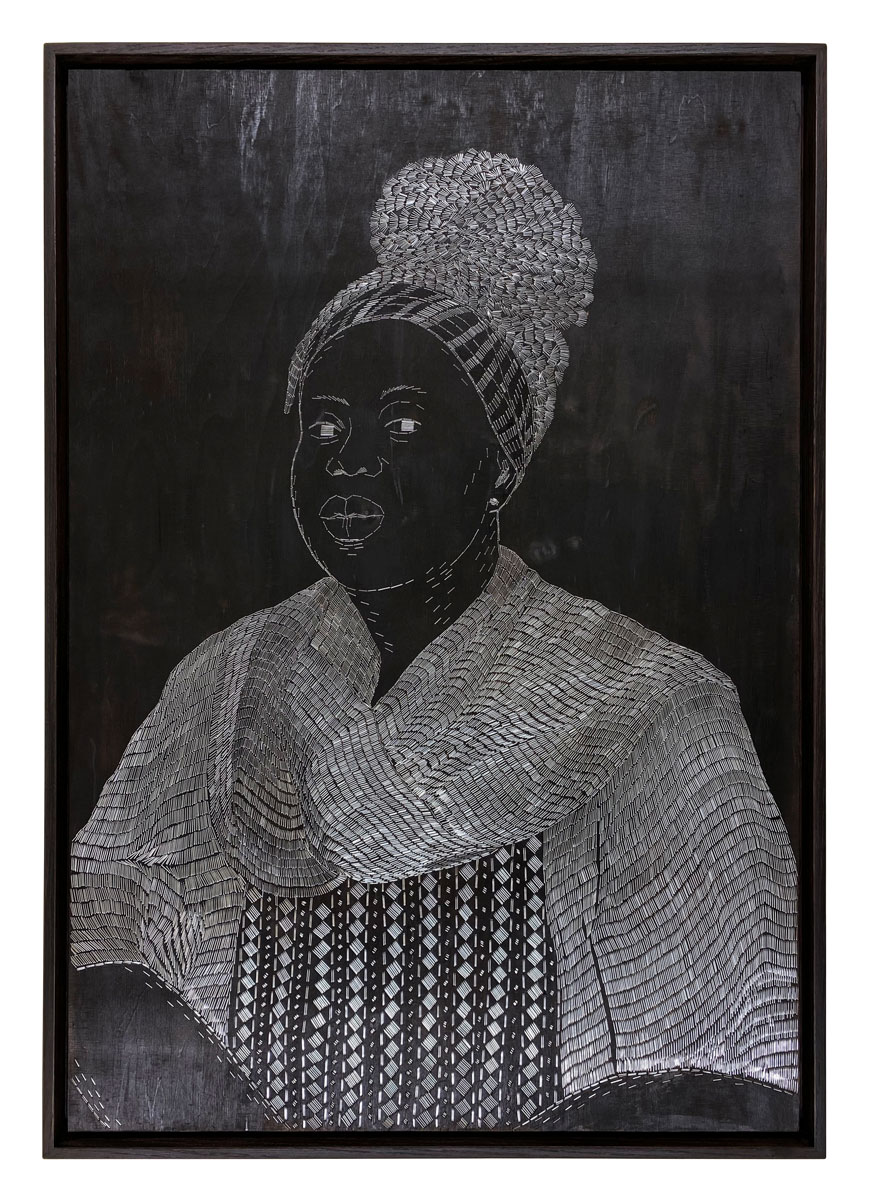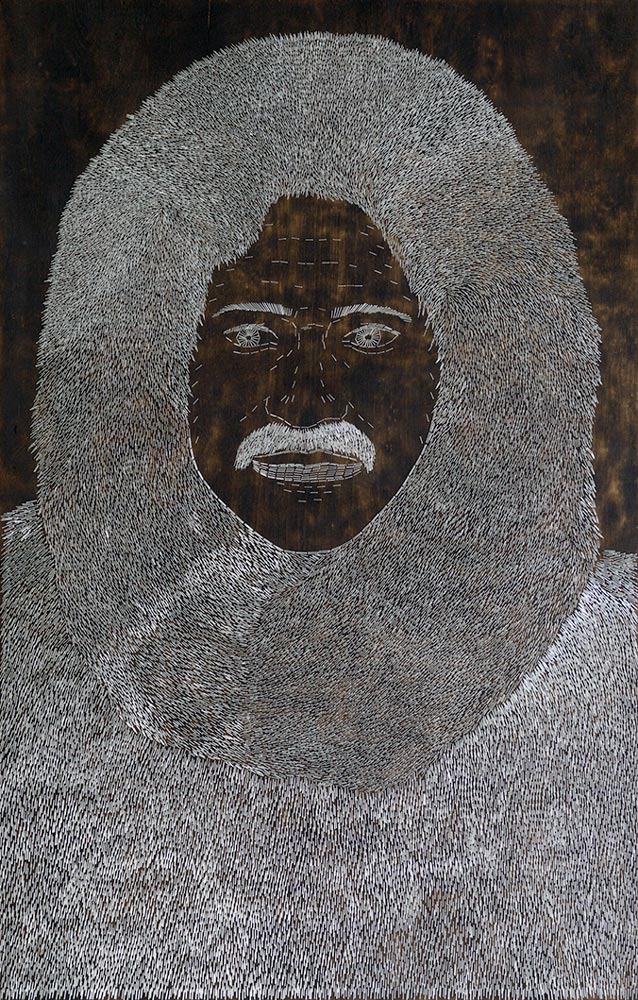Autograph’s current exhibition, YOU NAME IT by Sasha Huber, shares stories of Black liberation to examine who and what gets remembered, and how. Sasha’s artworks memorialise and honour a number of different individuals from history. In this blog we introduce some of the individuals from the exhibition, including more well-known figures such as Frederick Douglass, the national leader of the American abolitionist movement, to lesser-known individuals whose stories deserve to be memorialised, such as Tilo Frey, the first woman of colour elected to the Swiss National Council. Drawing on an Afro-diasporic tradition of the call and response format, we ask and answer ‘Who was…?’
Renty Taylor (c.1775 – c.1865) and his daughter Delia (dates unknown) were enslaved workers on the 'Edgehill' cotton plantation in South Carolina. Despite anti-literacy laws in the US, Renty taught himself to read and shared his skills with other enslaved people on the plantation.
In 1850, the Swiss-born American biologist, geologist and proponent of scientific-racism, Louis Agassiz, stripped Renty, Delia and five other African men and women from the plantation (Alfred, Fassena and Jem, Jack and his daughter Drana) of their clothes and dignity, and forced them to pose for photographs against their will. The daguerreotype images were taken by Joseph T. Zealy and utilised the technologies of photography as part of a eugenics campaign intended to illustrate what Agassiz believed to be “the inferiority of the black race".
In Sasha’s exhibition, Renty is paid tribute to across a number of artworks. For instance, in Tailoring Freedom (pictured above), Sasha reproduces the daguerreotype portraits on wood, and has ‘dressed’ Renty in a suit inspired by one worn by Frederick Douglass, and Delia in an outfit inspired by clothes belonging to Harriet Tubman. Using her signature stapling method, Sasha symbolically heals wounds, reclaims freedoms and remedies colonial traumas while honouring the historic contributions of the abolitionists Douglass and Tubman (more on them below). Sasha gifted these portraits of Renty and Delia to Tamara Lanier, the descendant of Renty.
With this depiction of Renty and Delia, Sasha raises important questions about the ethics of looking at images of enslaved people, such as: How can one honour Renty and Delia, and those who suffered a similar fate, without re-enacting the white, colonial gaze? Sasha subverts Agassiz’s dehumanizing intention to document racial types and creates a counter-narrative that directs us toward a way of looking with sensitivity at controversial images.

Frederick Douglass (c. 1817 – 1895) was an American social reformer, public speaker, writer and statesman who fought against slavery, for emancipation and voting rights. A former slave, Douglass escaped the plantation on which he was forced to work and later became a national leader of the abolitionist movement. Douglass authored three autobiographies and is famous for his public speaking skills and antislavery writings. He is the most photographed American of the 19th century.

Harriet Tubman (c.1822 – 1913) was an American abolitionist and social activist. Tubman was born into slavery, which she managed to escape in 1849. She went on to make 13 missions to rescue around 70 enslaved people, including family and friends, using the Underground Railroad – a network of antislavery activists and safe houses. During the American Civil War, Tubman served as a nurse, an armed scout and a spy. In her later years, Tubman was an active member of the women’s suffrage movement.

Tilo Frey (1923 - 2008) was a Cameroonian-Swiss politician. In 1971, women in Switzerland gained the right to vote and stand for office, and Frey was one of the first women and the first woman of colour elected to the Swiss National Council. Frey actively advocated for women’s suffrage and women’s rights, and campaigned around issues of equal pay and the legalisation of abortion.
A portrait of Frey, part of Sasha’s series The Firsts and commissioned by Autograph, is on display in the exhibition. The portrait is produced using Sasha’s signature stapling technique and was commissioned by Autograph with the intention to honour her legacy and to make lost narratives visible, through a symbolic act of remembrance that resists erasure.
You can read more about the commission here and a conversation with Sasha about the artwork here.

Khadija Saye (1992 – 2017) was an artist, activist and carer who died alongside her mother in the Grenfell Tower fire in West London. Saye’s photography explored her Gambian-British identity, heritage, and ideas of spirituality. In 2016, during the Black Chronicles: Missing Chapter exhibition, Autograph hosted a Tintype workshop over three days, where over 300 portraits were made. Saye was one of the participants, creating a series of self-portraits which she later gifted to her mother. Although the original works were destroyed in the fire that claimed the young artist’s life, the works were digitised at the time, and form the basis for a newly commissioned work by Sasha, displayed in the exhibition. Saye said of her tintype series: “Using myself as the subject, I felt it necessary to physically explore how trauma is embodied in the black experience.”
Using her staple gun, Sasha meticulously ‘shot’ hundreds of staples into a fire burned piece of wood as a symbolic way of remembering the 72 individuals including Saye who tragically lost their lives, and those that continue to be affected by the tragedy. Sasha says: “When I heard about Khadija and her mother's loss, I felt deep sorrow…I wanted to portray her with my air staple gun to highlight unequal power dynamics in our society which reflects the complex conditions she grew up in”.
This portrait was made for Autograph’s commissioning project Amplify – Stranger in the Village: Afro European Matters.

Matthew Alexander Henson (1886–1955) was an African American explorer and (potentially) the first person to set foot on the North Pole in 1909. His contributions to the expedition were minimized due to his skin colour, and while Admiral Peary received many honours for leading the expedition to the Pole, Henson's involvement was largely ignored by those outside of the Black community for decades. It is only in recent years that Henson’s exploits have been recognised by a number of prestigious individuals and organisations.
In 1912 Henson published a memoir titled A Negro Explorer at the North Pole. Notably, Henson recalls how, as a 10-year-old, he went to a ceremony honouring Abraham Lincoln, where he was inspired by a speech given by Frederick Douglass, who called upon Black people to vigorously pursue educational opportunities and battle racial prejudice.
The portrait of Henson pictured here is part of The Firsts series, which features in the exhibition.
11 Nov 2022 - 25 Mar 2023
Free exhibition at Autograph's gallery in London
Banner image: Sasha Huber: YOU NAME IT exhibition at Autograph. 11 November 2022 - 25 March 2023. Curated by Renée Mussai, Mark Sealy and Bindi Vora. Photograph by Kate Elliot.
Images on page: 1) Sasha Huber, Tailoring Freedom – Renty and Delia, 2021. Metal staples on photograph on wood, 97 x 69 cm. Courtesy the artist and Tamara Lanier. Original images courtesy the Peabody Museum of Archaeology and Ethnology, Harvard University (Renty, 35-5-10/53037; Delia, 35-5-10/53040). 2) Frederick Douglass. 3) Harriet Tubman. 4) Photo of Tilo Frey (1971). Comet Photo AG (Zürich) - this image is from the collection of the ETH-Bibliothek and licensed under the Creative Commons Attribution-Share Alike 4.0 International license. 4) Sasha Huber, Khadija Saye - You Are Missed, 2021-22. Metal staples on fire burned wood; 104.5 x 73.5 cm. © the artist. Courtesy of / commissioned by Autograph, 2021. Supported by Art Fund. 5) Sasha Huber, Matthew Henson (1866- 1955) from the series The Firsts, 2020. Courtesy Caterina Fake. 6) Sasha Huber, Agassiz Down Under [detail], 2015. Courtesy the artist.
Related content: 1) Sasha Huber, film still from The Firsts - Tilo Frey, 2021. Video, 4"45'. Music by Brandy Butler, ‘Before The Tide’. © the artist. Courtesy of / commissioned by Autograph, 2021. Supported by Art Fund. 2) Sasha Huber, Agassiz Down Under [detail], 2015. Courtesy the artist. 3) Sasha Huber, film still from Rentyhorn [detail], 2008. 4'30" min. Courtesy the artist and the Museum of Contemporary Art Kiasma.
Autograph is a space to see things differently. Since 1988, we have championed photography that explores issues of race, identity, representation, human rights and social justice, sharing how photographs reflect lived experiences and shape our understanding of ourselves and others.